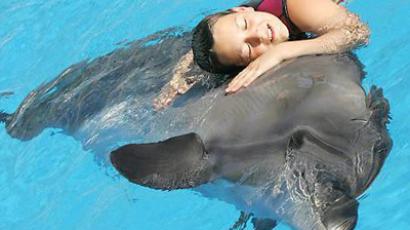Open-sea US Navy testing will kill hundreds of dolphins and whales

The US Navy admits its underwater training and experiments will result in the deaths of hundreds of dolphins and whales over the next five years – but insists that its testing program is essential.
Computer models showed that the Navy will likely kill 186 whales
and dolphins off the East Coast and 155 near the coast of Hawaii
and Southern California – its main operation areas – between 2014
and 2019.
Results also showed that marine mammals on both coasts would likely suffer more than 13 thousand serious injuries and nearly 4 million minor ones.
Most of these will be the result of underwater explosions, though some injuries will be the result of physical contact with ships, or sonar testing. Larger species are particularly vulnerable to Navy activities.
The Navy is obliged to annually commission these studies - which take existing data about the impact of military activities on marine wildlife, and project it into the future – due to federal environmental regulations. If it injured animals without having done the impact study, it would risk seeing its off-shore activities suspended altogether, as it would be a violation of federal environmental law.
Rear Adm. Kevin Slates, the energy and environmental readiness division director for the Navy, defended the planned operations, regardless of the figures.
“Without this realistic testing and training, our sailors
can’t develop or maintain the critical skills they need or ensure
the new technologies can be operated effectively,” he told
the media earlier this week.
The influential non-profit National Resources Defense Council
(NRDC) has said that the studies show that the Navy’s open-sea
program is “simply not sustainable”.
Michael Jasny, senior policy analyst at NRDC, says that the real impact is greater still than what the Navy has projected.
The Navy studies show that there will be almost 28 million “minor instances” of behavior change that will occur as a result of the testing. But Jasny believes that these temporary disturbances – such as a dolphin that is not able to use a feeding ground, or a whale that is scared and starts panicking – can also prove to be fatal.
"These smaller disruptions short of death are themselves accumulating into something like death for species and death for populations," Jasny said.














